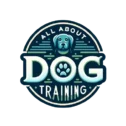Unlocking Canine Potential: Proven Puppy Training Secrets
When it comes to puppy training, there's a lot more to it than just teaching commands. It's a crucial period of socialization, manners and rules learning, and most importantly, creating a strong bond between you and your furry friend.

Understanding Puppy Behavior
Before commencing on any training regime, it's important to comprehend your puppy's behavioral cues and responses. At this stage, the primary focus is on socializing your pup to a variety of experiences, including interactions with different types of people, environments, and other animals.
Socialization
Expose your puppy to various situations and environments at an early age. Short, frequent walks in the neighborhood allow them to experience grass, leaves, traffic noise, and even mail people. Celebrate any peaceful encounters with strangers and gently discourage any signs of over-excitement or fear.
Manners
Teaching good manners is equally important. It's vital to redirect any inappropriate behaviors like chewing on furniture or clothes towards acceptable alternatives like toys or chewing bones. Swiftly and gently correct any sign of food aggression to ensure your dog is well-behaved around others.
Training Basics
Next, we have the meat and potatoes of puppy training: the commands. Commands not only provide mental stimulation but are also crucial for the dog’s safety.
The Sit Command
This is perhaps the easiest command to teach. Hold a treat close to your puppy’s nose, move your hand up, allowing his head to follow the treat and causing his bum to lower. Once he’s in sitting position, say "Sit" and give him the treat and share affection.
The Come Command
This command is a lifesaver. Start the training in a closed environment. Put a leash and collar on your dog and go down to his level and say, “Come,” while gently pulling on the leash. Reward him with affection and a treat when he gets to you.

The Stay Command
Before attempting "Stay", your dog should be an expert at "Sit." Open the palm of your hand in front of you, and say "Stay." Take a few steps back. If your puppy stays, give him the treat and some affection. Increase the number of steps you take each time.
Training Equipment
Just like a carpenter needs tools to do his job, you are going to need some essentials to help you in this quest of puppy training.
Training Leashes and Collars
Consider getting a training collar and a leash. A classic flat collar or a harness is a good starting point for a puppy, as they cause little to no discomfort.
Clickers
Clickers are used to 'mark' the desired behavior. As soon as your dog executes the desired behavior, you 'click' and reward. It is a clear way for your dog to understand what behavior resulted in the treat.
Training Treats
Treats are one of the most effective training tools. Use small, easily digestible treats for training sessions. Ensure that treats make a modest part of your puppy's diet.
House Training Your Puppy
Another pivotal part of creating a harmonious living environment is house training your puppy. It demands patience, consistency, and tons of positive reinforcement. Remember, the goal is to instill good habits while building a loving bond.
Crate Training
Crates are one of the most efficient and effective ways to train a puppy. It takes advantage of the natural inclination of the puppy to keep his den clean.

Potty Training
Typically, a puppy can control their bladder one hour for every month of age. So if your puppy is two months old, they can hold it for about two hours. Be consistent in where you take your puppy to do his business, the routine is fundamental. Celebrate after he eliminates at the right place.
Handling Behavioral Issues
From puppyhood to adulthood, dogs never stop learning. Be proactive in addressing potential issues that could turn into bigger problems down the line.
Play Biting
Play biting is a part of normal canine behavior, but it needs to be addressed early on to ensure it doesn't evolve into a problem in adulthood. Redirect biting by providing chewable toys or time-outs.
Separation Anxiety
Preventing Separation Anxiety from occurring is easier than treating it after it has set in. Teach your pup from a young age that it's OK to be alone. Increase your time away gradually.
Consistency is Key
Lastly, the most important part of any training regime is consistency. Use the same command words and keep the process consistent. Also, keep in mind training should be distributed during different times of the day and include lessons inside and outside the house.

Training a puppy is a lot like teaching children. It requires patience, guidance, and lot of love. The effort you put in now to train your puppy, will result in a lifelong bond of respect and understanding. In turn, you'll get companionship, joyfulness, and plenty of tail-wagging greetings at the end of a long day.
Remember, every dog and every person is unique. Don't get disheartened if you encounter hurdles in your training process. Just stay consistent and positive, celebrate the small victories, and find the joy in the journey. And soon you'll realize that it's not just about who's training who – it's about learning and growing together.
Happy puppy training!

